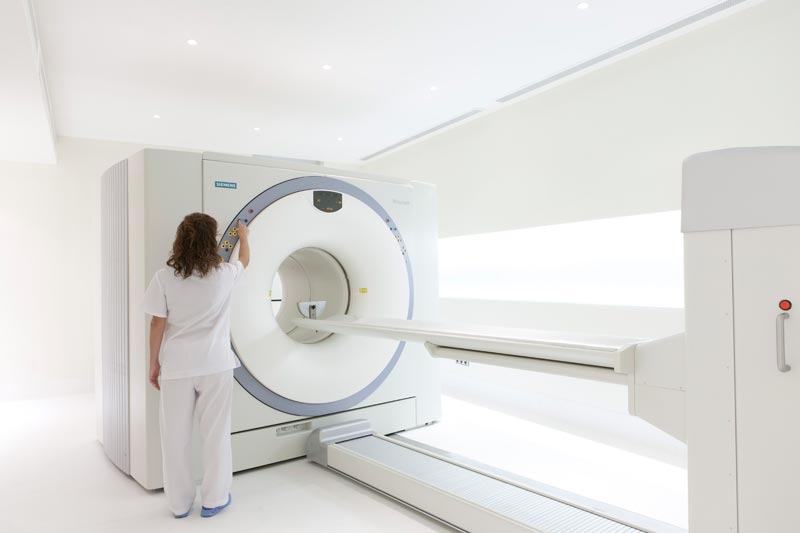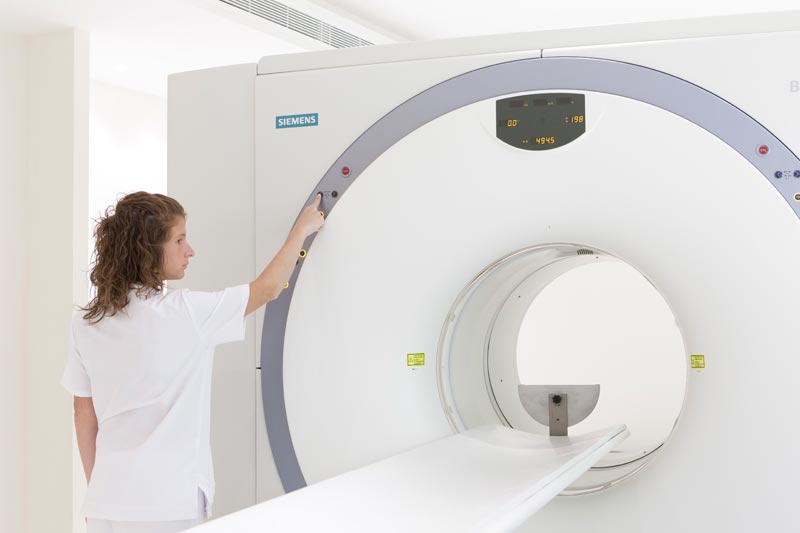A picture paints a thousand words; this famous phrase is of even greater relevance when related to the constant medical advances being made in the area of diagnostic imaging, with its continuously increasing precision, specificity and clarity in whichever part of the body.
X-rays allow us to take a first look at any part of the body and are a basic investigation which can be complemented by more specific imaging such as ultrasound, magnetic resonance and tomography.

Nowadays science and technology are moving forward towards complementarity of imaging resources, achieving a more detailed assessment.
One example of this is PET-CT, this technique provides metabolic information obtained by PET (Positron Emission Tomography) and anatomical information through CT (Computerised Axial Tomography). Both investigations performed simultaneously, complementing each other has meant a revolution in the diagnosis and treatment of tumours.
This procedure also known as PET imaging or PET scan combines nuclear medicine and tomography to allow detection and measurement of tumours by identifying, locating and quantifying the consumption of glucose. Increased glucidic metabolism being one of the primary characteristics of neoplastic tissue.
Investigations like this now allow the detection of disease at an earlier stage in its process than might have been evident with other imaging investigations and this undoubtedly strengthens preventive treatment. In recent years experts consider PET-CT to have been one of the most influential techniques developed in the diagnosis and monitoring of oncology patients.
For the first part of the investigation, the patient receives the radioisotope 18F-FDG intravenously. When having this, the patient must stay lying down, in silence, in a semi-darkened room for about 45-60 minutes for the correct distribution and metabolism of the drug throughout the body. Once this period of resting has finished the patient goes to the PET-CT chamber to start the investigation which lasts approximately 20 minutes.

There are many benefits provided by this diagnostic test, it gives unique information which is impossible to obtain through other diagnostic imaging procedures.
In oncology:
This procedure has a series of indications where patients can benefit from undergoing this technique, the fundamental one being identifying oncological disease:
In Neurology and Psychiatry
There are also indications in neurology and psychiatry.
In HC Marbella we have the latest technology available.
The BIOGRAPH 6 ECO PET-CT at the Nuclear Medicine Unit at HC Marbella integrates PET and LSO crystal technology – the latest crystal technology on the market. This permits optimum performance in examination times and optimum capacity for the detection of lesions with a high performance, low dose, 6 slice CT. The opening between the PET and CT rings helping to prevent the patient from feeling claustrophobic.

In HC Marbella a detailed report, prepared by our Consultant in Nuclear Medicine, can be given on the same day as the investigation, thus avoiding any unnecessary waiting and the resulting anxiety which this can cause.
The Oncology Unit team at HC Marbella will be happy to assist you. Please contact us or leave us your details and we will contact you.
Rafael Porras Perez
Oncology Nurse HC Marbella
Radiotherapy Equipment Technician
February 2, 2016
Read other news
Tel.: +34 952 908 628
+34 609 148 799
952908898 Oncology
951829978 Diagnosis by imaging
951829947 Gynecology
952908897 Fertility
951829947 Physiotherapy